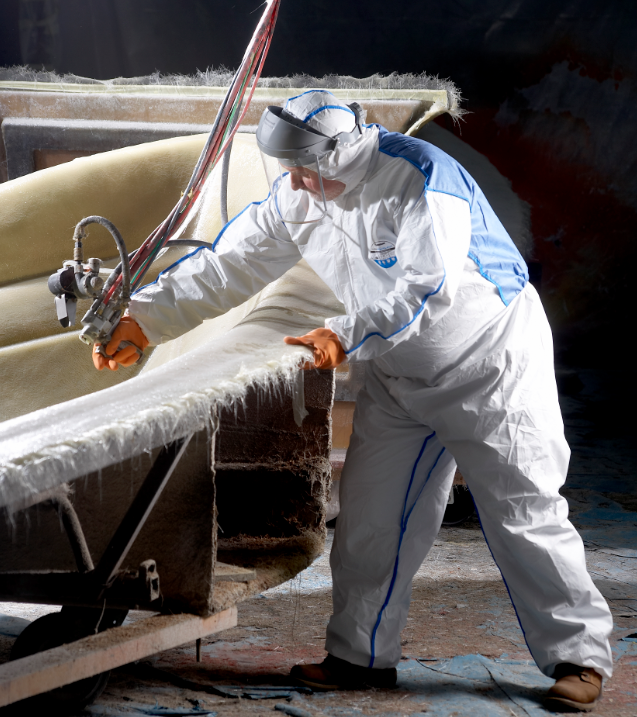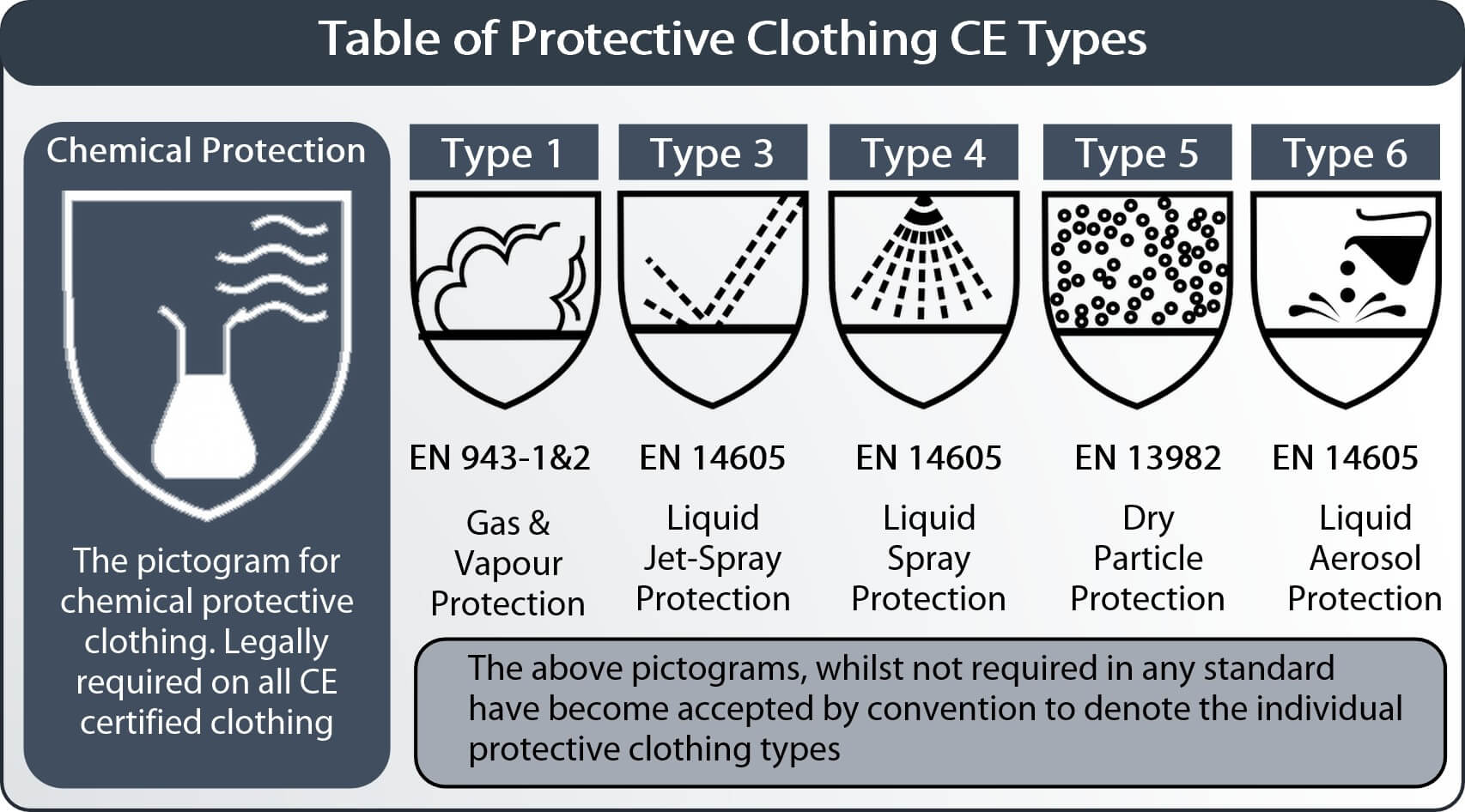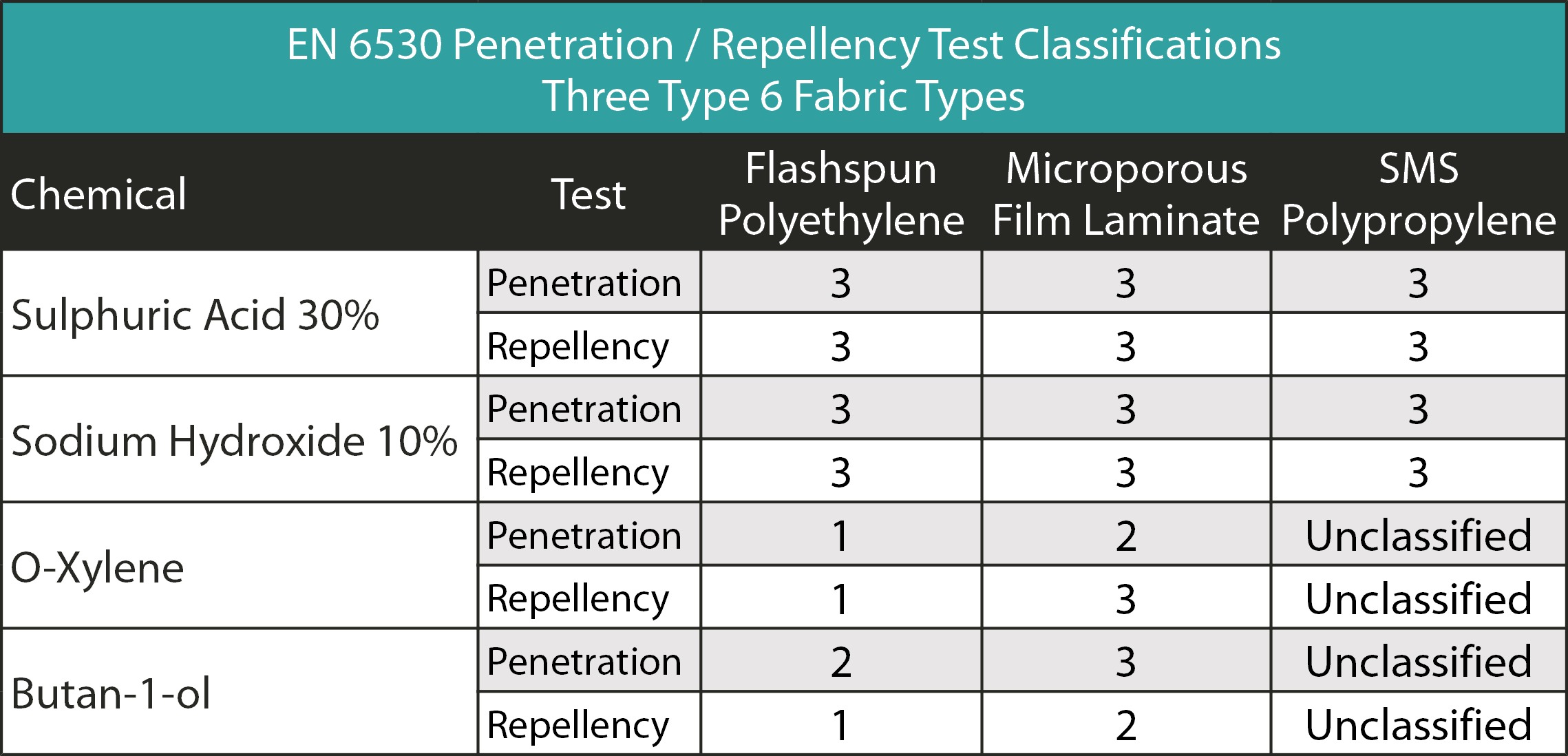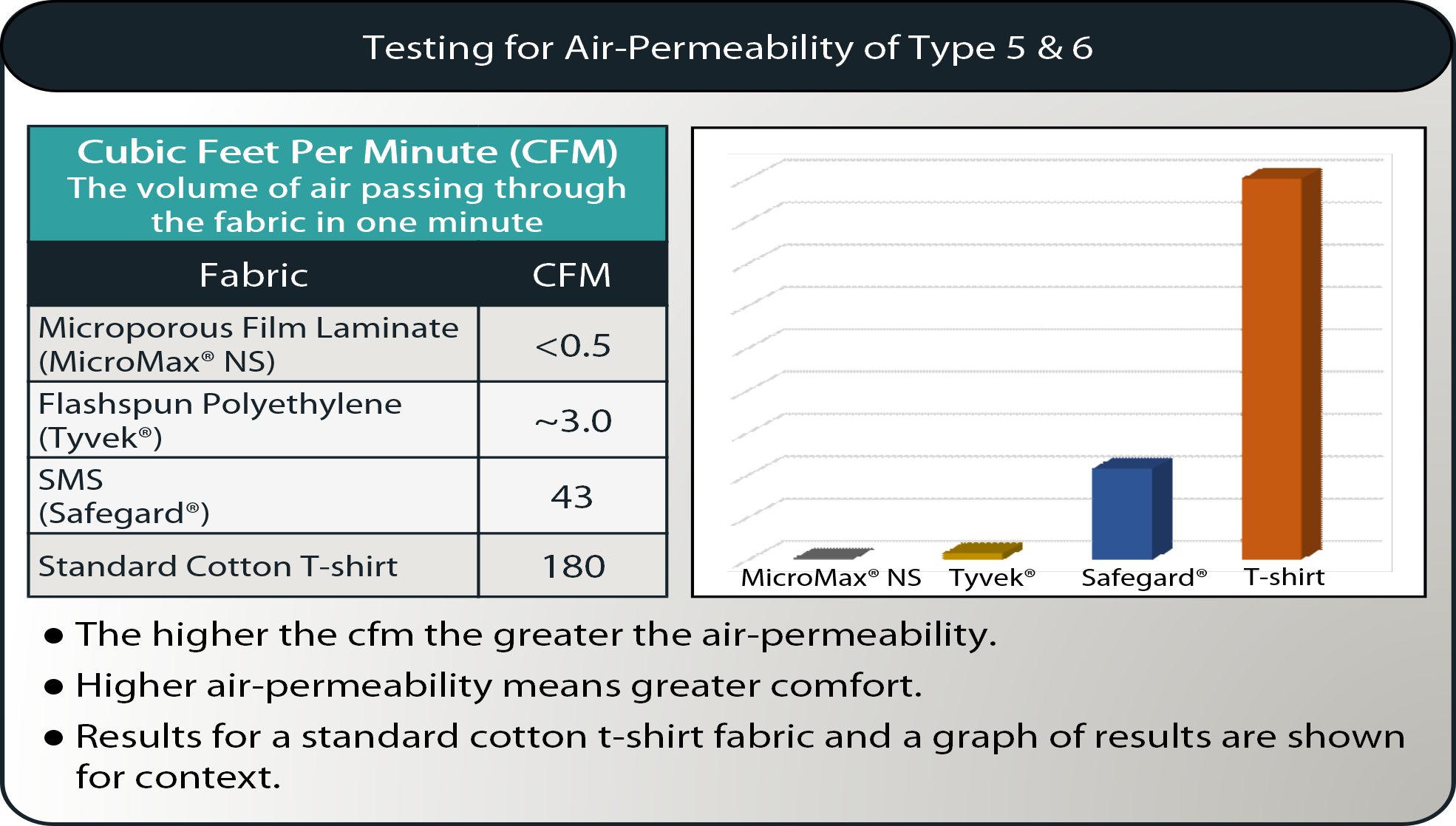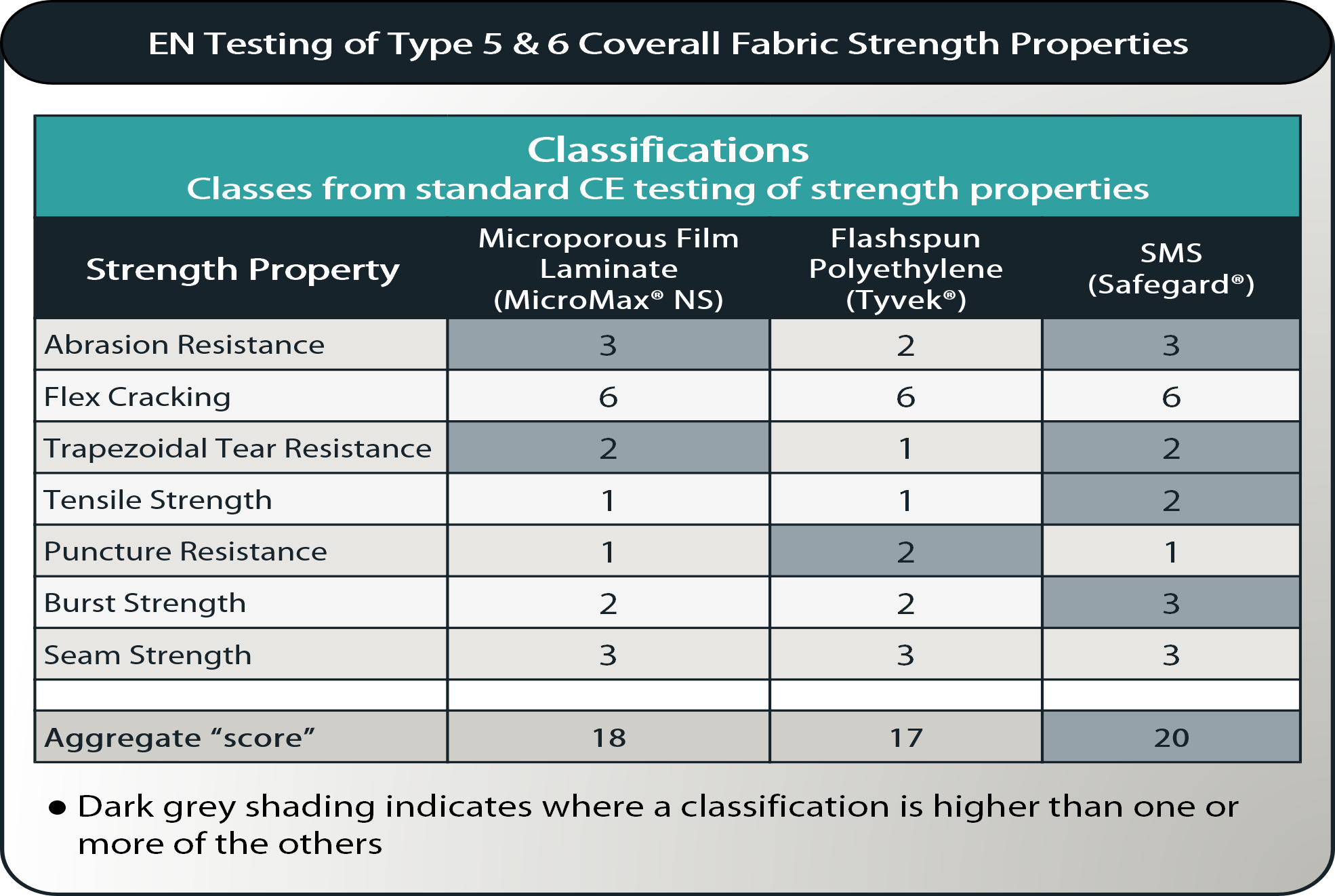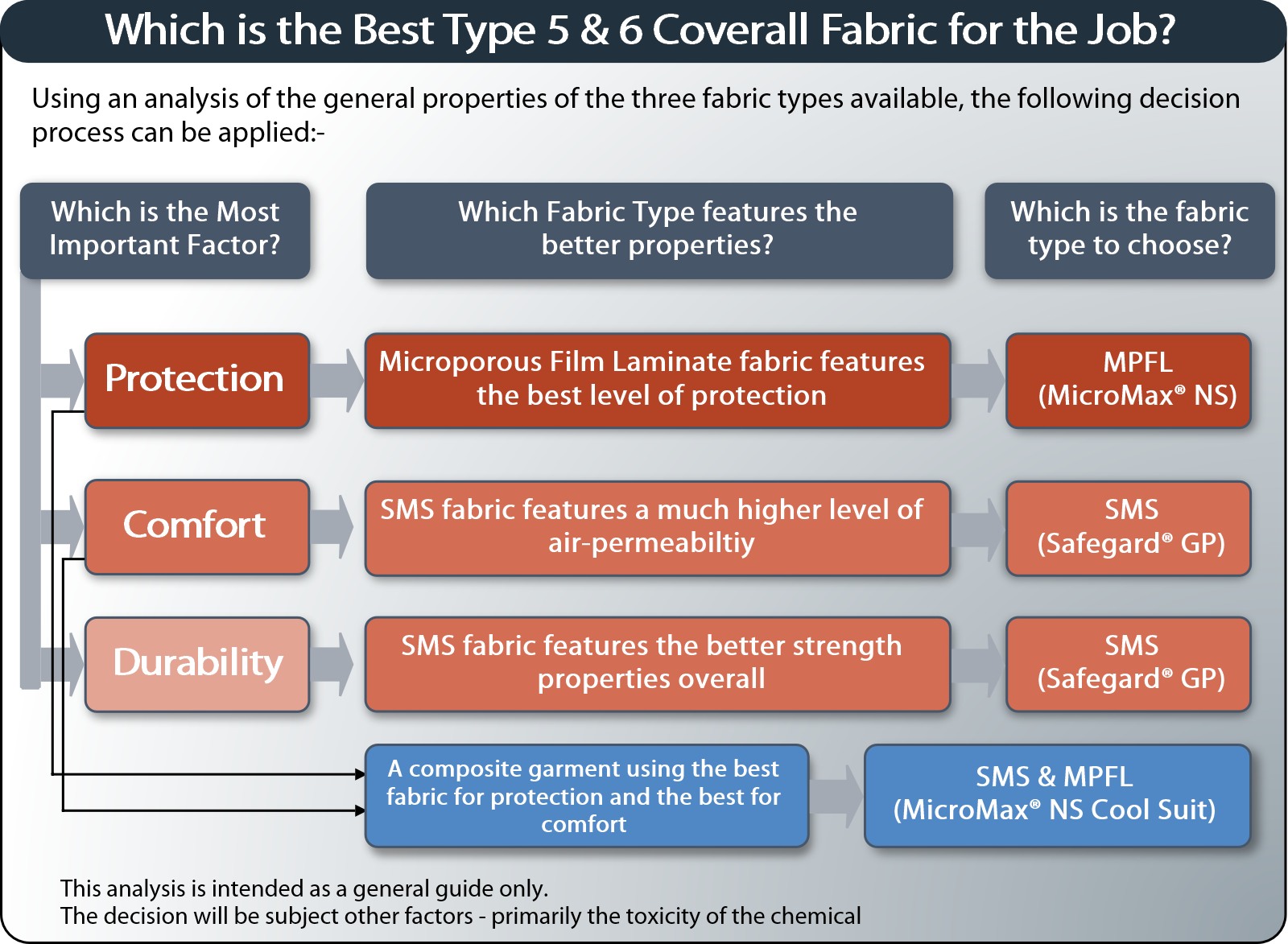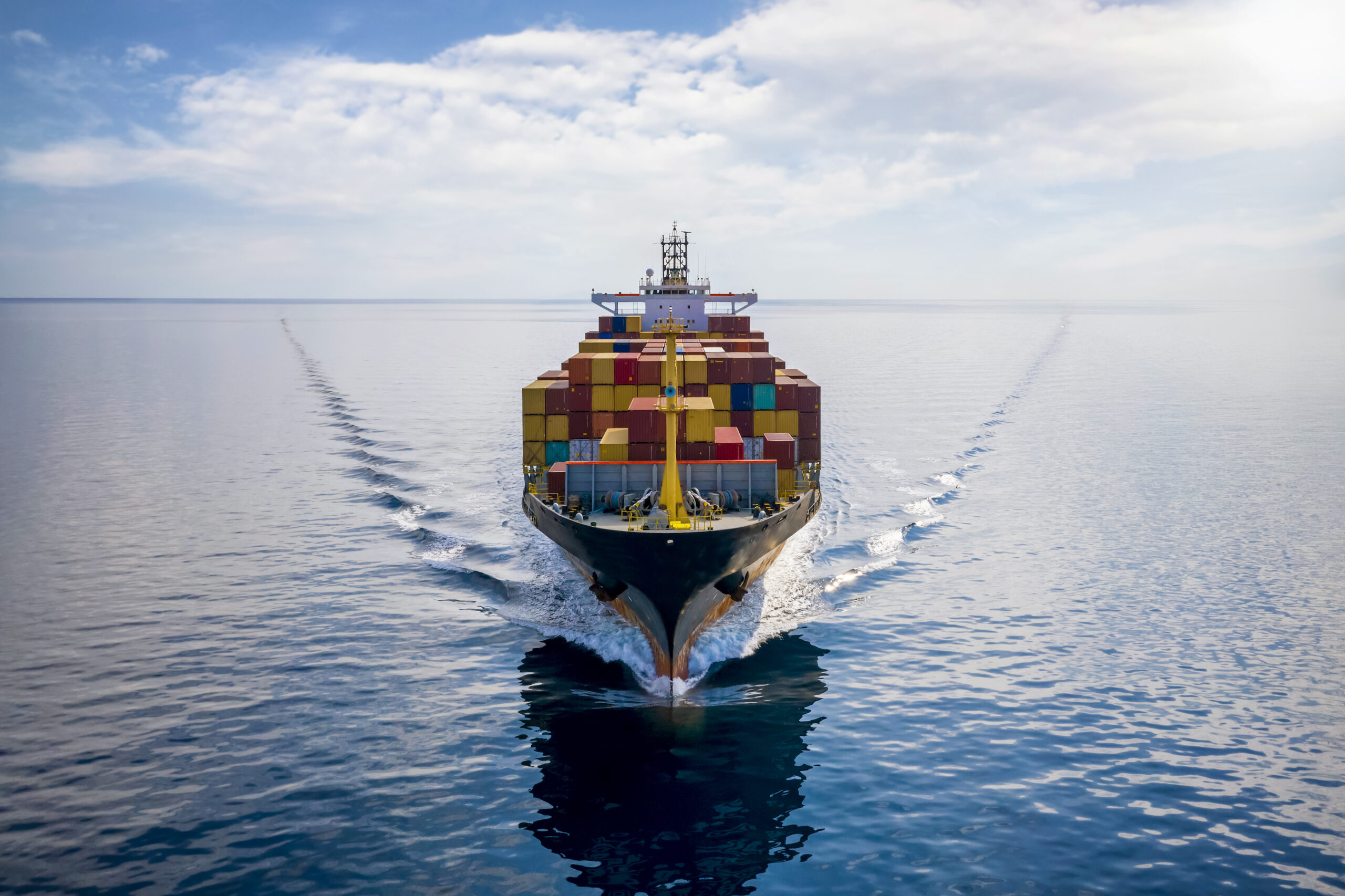The staple of disposable protective clothing is The Type 5 & 6 coverall, alternatively known as “disposable”, “single-use” or sometimes even “paper” coveralls (although they are not paper!). They are relatively simple to produce, throw-away and comparatively cheap. Consequently, many users focus on price as the main criteria of selection – especially given the complexity of the many options available on the market. This blog considers what “Type 5 and 6” means, the options available, the differences and how that knowledge can be used to select the best option for the task in hand.
| If you think disposable coveralls are not protecting against particularly dangerous hazards consider that EN standards treat them as “Category III” PPE. That is, PPE to protect against hazards that “may cause very serious consequences such as death or irreversible damage to health”. |
Disposable coveralls are as much an item of PPE as any other type of safety equipment. They are designed to protect against hazards that – while not immediately life threatening in the way that concentrated sulphuric acid or a brick falling from a great height is – may result in serious consequences… especially in the long term.
Disposable Type 5 & 6 coveralls are not all the same and just like any other PPE ensuring appropriate protection means understanding the differences so that the right coverall – the best choice for the application – can be selected.
What Is the Difference Between Type 5 & 6 Disposable Safety Clothing?
The European standards for chemical protective clothing originally identified 6 “types” of chemical protection, labelling them as “Types” 1 to 6. Whilst there are now only 5 after Type 2 was removed by the 2015 version of EN 943, these “Types” have become by-words for the different clothing suitable for the types of protection identified:-
These Types relate to either the form of the hazard (liquid, dust or gas) and the form of physical liquid spray (aerosol, spray or jet-spray). However, whilst a useful starting point any analysis based solely on these Types – such as a simple decision to use a basic Type 5 and 6 coverall for a particular application only because it features an aerosol spray – is limited and simplistic for reasons explained in the panel below. A more detailed analysis of the specific properties of the available garment options combined with an analysis of the features of your application is vital to ensure selection of the best option for the task in hand.
Why is coverall choice made solely on the basis of a “Type 6” physical spray defined by CE Types severely limited and why could it result in a poor choice of garment? |
For these reasons selection of protective clothing based solely on the CE Types can result in a poor selection. Users must consider more issues relating to the application, task and environment. |
For the purposes of this discussion Type 5 relates to protection from hazardous dusts whilst Type 6 is protection from hazardous liquids in an aerosol spray form.
All Type 5 or Type 6 garments (I know of no exceptions) are BOTH Type 5 AND Type 6 – which given that protection against dust is different from protection against liquids is perhaps a little odd. Yet despite this, the fact that products available are both suggest the two types of protection are the same. They are not. Type 5 protection and Type 6 protection are different and garment choice should recognize this; different Type 5 & 6 garments may be more or less effective for dust or liquid protection.
What Are the Options for Type 5 and 6 Safety Clothing and How Do They Compare?
The major properties of a disposable coverall are defined by the fabric. And whilst multiple brands are available in fact there are only three options, with a fourth being a composite garment using two of those three. So what are they and what are their key properties?
The three distinct fabrics are:-
- SMS: an abbreviation of “Spunbond–Meltblown–Spunbond“. Lakeland’s coverall brand is Safegard®
- MPFL: an abbreviation of “Microporous Polyethylene Film Laminate“. Lakeland’s coverall brand is MicroMax® NS.
- Flash-spun Polyethylene: commonly known by the brand “Tyvek®” and manufactured only by Du Pont®.
The common link between these fabrics is they are all nonwoven materials – that is constructed of fibers and/or films extruded from melted polymers and bonded into a flat sheet rather than spun fibers woven into fabric. All three are based on either polypropylene (SMS), polyethylene (Flashpun Polyethylene) or in the case of MPFL, a combination of both. The general construction elements are shown in the table below:-
Whilst there are only three fabric options, a fourth optional coverall combines SMS and MPFL fabrics – such as Lakeland’s Cool Suit.
The properties of these fabrics and the coveralls they produce can be summarized in terms of three key elements; the effectiveness of protection offered, the level of comfort they offer, and the durability. So how do each of these fabric compare?
1. Which Of the Three Types of Fabric Offers the Best Protection?
Our blog here looked at which of these fabrics offers the better liquid protection using the standard testing required in certification to the Type 6 standard (EN 13034) and to the standard for protection against infectious bacteria and viruses (EN 14126). The results are conclusive.
Testing for Type 6 (liquid aerosol protection) measures resistance against penetration by four specific chemicals with classification for both penetration (the percentage of liquid passing through the fabric) and repellency (the percentage of liquid repelled by the fabric). The results shown below indicate that the microporous film laminate (MicroMax® NS) achieves the better results with the SMS (Safegard® GP) having the poorest:-
Meanwhile the four tests used in the EN 14126 infectious agent standard are even more conclusive, with the MPFL being the only fabric to achieve the highest class in all four tests, the flashspun polyethylene achieving the lowest class in three tests and failing to meet the minimum class in one. SMS fabric is untested, being unsuitable for this type of protection.
Clearly these test results prove conclusively that microporous film laminate in the form of MicroMax® NS offers the superior protection against liquid. A graphic demonstration of this is shown in the video below, which compares liquid protection of MicroMax® NS (MPFL) with Tyvek® (flashspun polyethylene)
How Do the Three Fabrics Compare in Terms of Dust Protection?
Unfortunately there is no fabric test against dust penetration in the CE testing process. Only the Type 5 finished garment Type Test, in which a test subject enters a spray cabin filled with dust particles (as described above) provides an indication of performance.
Dust protection is different to liquid protection
because liquids and dusts behave differently.
Dust particles float in the atmosphere and move only with air flows so the protection properties of the fabric can become less important than its breathability. A fabric with low breathability creates a greater “bellows effect” – resulting in flows of air through stitch holes in seams, zipper teeth if exposed and gaps between the coverall and other PPE. These flows of air draw surrounding particles into the suit, an effect much greater if the fabric itself does not allow air to pass through.
Proof of this can be seen in the detailed results of Type 5 finished garment tests which suggest a high percentage of any inward leakage occurs through the zip if it is not sealed with a cover. In fact an effective way to improve the dust protection efficiency of a disposable coverall is to ensure the zip is sealed. You can read more about this in our blog on five tips to improve dust protection.
Thus for dust protection, the breathability of the fabric, which minimizes the “bellows effect” can be as important as the actual protection properties of the fabric. And of course, fabric breathability is also the primary driver of comfort.
2. How Effectively Do the Three Fabrics Allow Air-Permeability?
| No protective clothing can be truly described as “comfortable” relative to say, a cotton T-shirt. The reality is choice of fabric and garment design is more a question of how much the level of discomfort is minimized. |
Whilst the design and fit of a garment is important for comfort (Lakeland use a unique design incorporating the best of traditional European and North American styles known as the “Super-B” ) without doubt the most important factor is breathability or air-permeability, the tendency of a fabric to allow air to pass through with the least resistance. So how do our three fabrics perform in terms of air-permeability?
While no testing in EN standards for disposable Type 5 and 6 clothing measures air-permeability, there are various non CE tests that can provide an indication. Lakeland has conducted independent analysis using a test measuring air permeability in cubic feet per minute or “cfm”. The higher the cfm the higher the air-permeability and the greater the comfort level. Results of this testing on the three fabrics is shown below.
The following conclusions can be drawn from the results:-
- Bearing in mind the permeability of a cotton t-shirt fabric of 180cfm, whilst the cfm of flash-spun polyethylene is greater than that of the microporous film laminate, both are as relatively close to zero as makes very little real-world difference.
- Whilst still nowhere near the level of a standard t-shirt the air-permeability of the SMS material is far greater(10 times greater) than that of the other two fabrics.
- In summary, the SMS garment is the only option that provides any real level of breathability with any realistic positive effect on comfort.
Another way to prove this for yourselves is to simply try blowing through the different fabrics. It will adequately prove the point. Or for a visual demonstration, watch the video below:
The effect of breathability on dust protection
As explained above the breathability of the fabric also influences the effectiveness of dust protection because of the bellows effect. A fabric with low breathability produces a stronger bellows effect resulting in more particles drawn through the seam holes, zip and other openings. Thus a disposable coverall of SMS fabric such as Safegard® may well provide more effective protection against dust that the other two fabrics. It will certainly be more comfortable!
3. Which of the Three Fabrics Features the Best Durability and Will Last Longer?
Finally, the overall strength of a garment is important for two reasons:-
- Protection: A poor quality, weak garment is likely to quickly tear… a torn garment will not protect.
- Cost Effectiveness: A user that chooses a coverall because it is cheap may well find it quickly tears and is unusable so simply buys more of them to compensate. A cheap coverall is not always a cost-effective choice.
As with liquid protection European Standards provide comprehensive testing of a range of strength properties; tensile, tear, burst strength, and so on. For each the results are classified from 1 (the lowest strength) to 6 (the highest). The results are publicly available so a comparison is easy to do:-
Once again the conclusions are relatively clear. Whilst results vary, the stronger fabric overall is the SMS (Lakeland Safegard® GP) – better or equal to the others in four of the seven tests. The microporous film is better or equal in two tests whilst the flashspun polyethylene achieves a superior result in only one.
This information is useful in two ways. First, it provides an overall indication of the general strength properties of each fabric. If the classifications are used as “scores” for each physical property; (the final row in the table) the aggregate scores across the range of tests shows Safegard® the winner with 20 “points”, MicroMax® NS second with 18 and the flashspun polyethylene third with a lowly 17 “points”.
Second it can be a useful tool in a more detailed selection process where a user considers the specific requirements for a garment relating to the unique range of task and environmental factors in his specific application. Our Guide to Type 5 & 6 Protective Clothing Selection, downloadable at the bottom of this blog, covers this in greater detail.
Conclusion: How Can This Information Be Used To Select the Best Disposable Safety Clothing for the Job?
This blog began with a simple question: “Which is the best Type 5 and 6 Coverall available”? Of course like many questions relating to PPE, the answer is more complex. The real answer is “It depends”.
What does it depend on?
The application of course.
We have seen how there are only three fabrics used to construct Type 5 and 6 protective safety clothing. We have also analyzed the available information that indicates the properties of each in terms of the three important factors; protection, comfort and durability.
This understanding can be used to select the best garment according to the specific needs of the application. Where liquid protection is critical the best option may be an MPFL garment (MicroMax® NS) ; if comfort is a priority the much higher air-permeability of SMS (Safegard GP) is likely to be the best option (provided it provides sufficient protection) and so on. This can be summarized in general terms in a basic selection flow chart such as the one below.
The Fourth “Best of All Worlds” Option for Safety Clothing… The Cool Suit.
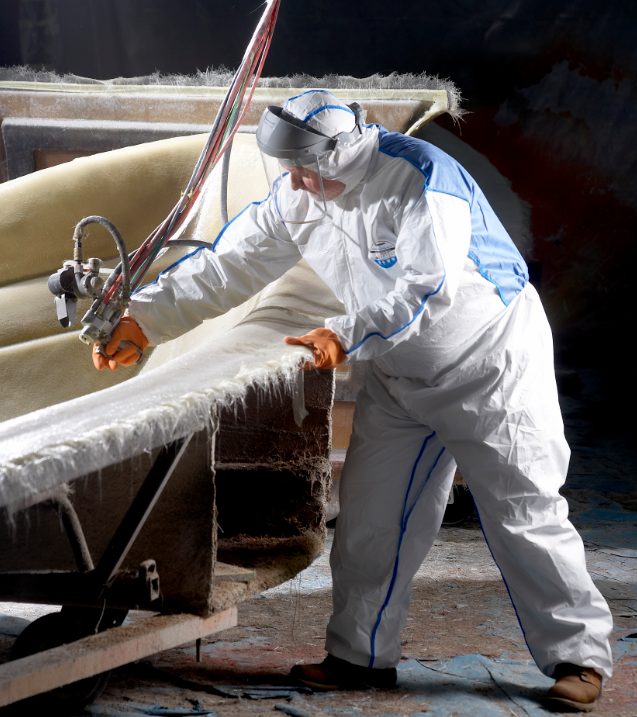
The MicroMax® NS Cool Suit uses MicroMax® NS MPFL fabric for the legs, arms, hood and front of torso – the areas where protection is most vital, whilst using a large panel of the breathable Safegard SMS fabric to the rear of the torso – where the lower protection offered is more acceptable. Thus protection is achieved where it is most needed, along with the additional comfort and reduced bellows effect derived from the higher air permeability of the rear breathable panel. And of course the MPFL and SMS fabrics also feature the generally higher strength options. The best of both worlds…
The video below explains the basics of the Cool Suit range.
For the user the important lesson from this analysis is to not assume that one or other of these three fabrics available are the best option for all applications. Consider the specific needs of your application and which option is the best choice. All PPE is a compromise between protection, comfort and durability, and a better understanding and application of the key properties of each will help ensure the optimum compromise is chosen.
* Tyvek® and Du Pont® are registered trademarks of Du Pont de Nemours, USA
* Safegard® and MicroMax® are registered trademarks of Lakeland Industries Inc, USA.

